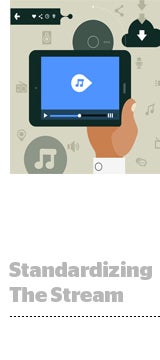 Eight trade associations, including the Interactive Advertising Bureau (IAB) Tech Lab, the 4As and the Association of National Advertisers (ANA), have teamed up to develop cross-platform standards for video ad delivery.
Eight trade associations, including the Interactive Advertising Bureau (IAB) Tech Lab, the 4As and the Association of National Advertisers (ANA), have teamed up to develop cross-platform standards for video ad delivery.
Their goal, according to Alanna Gombert, SVP of technology and ad operations for the IAB and GM of the IAB Tech Lab, is to ensure digital video files work with commercial broadcast rules, from production to delivery.
Compatibility is important as more video ads are delivered over connected devices.
“When [the IAB] released VAST 4.0 [in January], it had more robust support for traditional media,” Gombert said. “It was the first protocol that supported the mezzanine file structure and server-side stitching, which is critical to getting digital, cable and TV configurations in one place.”
A big issue is ensuring sound and picture quality for video ads delivered across devices. Little work has been done in this area, although the IAB and Media Rating Council have each worked to create common video viewability standards.
One of the trade bodies’ first efforts as a unified front will be forming three working groups, each focusing on file delivery specifications, advertising metadata and audio specifications and best practices.
Over the next few weeks, the trade bodies will prioritize the needs of each working group and develop an action plan, said Harold Geller, chief growth officer for Ad-ID, a joint venture of the ANA and 4As.
The most pressing issue, Geller said, is creating consistent quality and presentation of ads across platforms. Because audio is a big consideration, organizations like the Society of Cable Telecommunications Engineers and the broadcast/audio post-production trade group AICE are involved.
Although regulations like the federal Commercial Advertisement Loudness Mitigation rules require TV commercials have the same average volume as the programs they accompany, that does not apply to all platforms, Geller said.
“There needs to be consistency to the audio levels between ads and the content,” he added. “The lack of this kind of standardization negatively impacts the consumer’s viewing experience.”
Getting audio right is critical, agreed Gombert, especially since it’s easy to overlook the technical requirements to produce a quality-sounding video.
“If someone is encoding a file and it’s going to an OTT device that supports Dolby Digital 5.1, but they assumed the file was stereo, it won’t sound that great,” Gombert explained. “These are all things the groups are discussing, since it’s super critical that many practices in the traditional media side be pulled into digital.”












